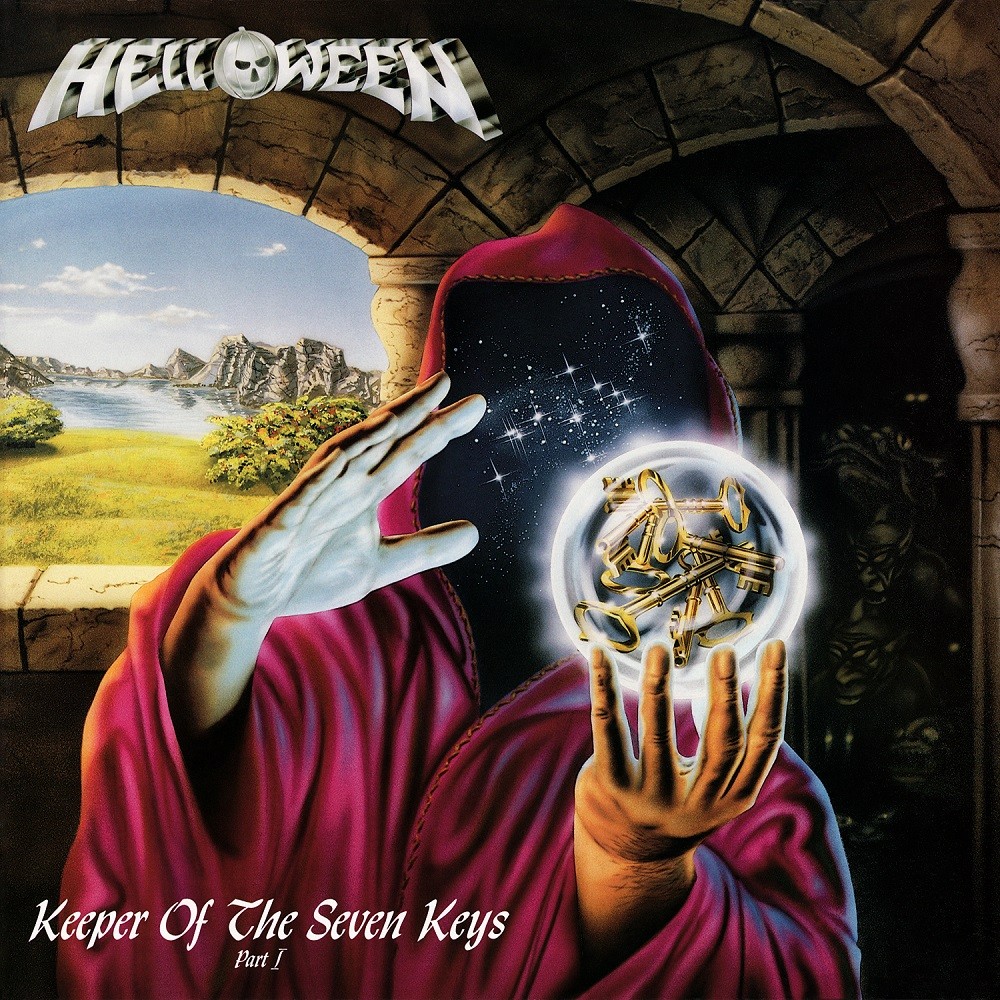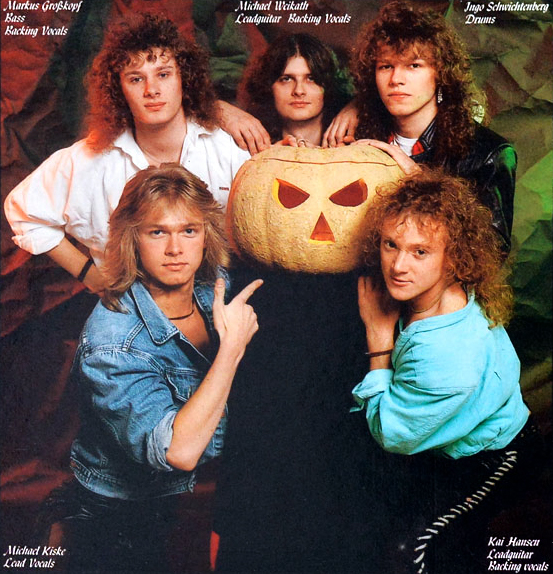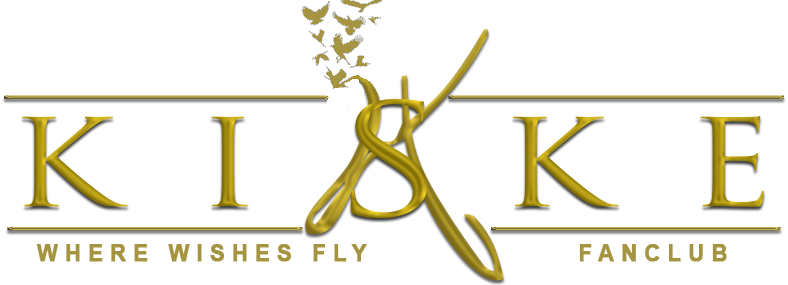
![]() Play on YouTube
Play on YouTube
![]() Stream on Spotify
Stream on Spotify
![]() Stream on Apple
Stream on Apple
TRACKLIST:
01. Initiation
02. I’m Alive
03. A Little Time
04. Twilight of the Gods
05. A Tale That Wasn’t Right
06. Future World
07. Halloween
08. Follow the Sign
Recorded & Mixed at Horus Sound Studio, Hannover, Nov./Dec.’86 & Jan.’87

LINEUP:
- Michael Kiske – vocals
- Kai Hansen – guitar, front cover concept, backing vocals
- Michael Weikath – guitar, backing vocals
- Markus Grosskopf – bass, backing vocals
- Ingo Schwichtenberg – drums
CREDITS:
- Producer, engineer – Tommy Newton
- Co-Producer, enginner, mixing, emulator – Tommy Hansen
- Cover design – Edda and Uwe Karczewski
- Concept By [Frontcover] – Kai Hansen, Limb Schnoor
- Concept By [Inner & Backcover] – Limb Schnoor
- Sleeve and back cover concept – Limb Schnoor
- Photography By [Photos] – Jurgen Muller
Keeper of the Seven Keys: Part I is the second studio album by German power metal band Helloween, released in 1987. It marks the first appearance of vocalist Michael Kiske. The album had a massive impact on the metal world and is widely considered a foundational album of power metal. It marked a turning point for Helloween, elevating them from a promising speed metal band to genre pioneers. By blending the aggression of traditional heavy metal with melody, fantasy themes, and high-pitched, operatic vocals, the album helped define what would become the classic power metal sound.
The single “Future World” was released on 13 April 1987


Single Tracklist:
A1. Future World
B1. Starlight (Kiske Version)
B2. A Little Time (Alternative Version)
Musically, “Future World” features upbeat tempo, melodic guitar riffs with powerful vocals, encapsulating the essence of the 1980s power metal scene. The lyrics of “Future World” present an invitation to envision a utopian society characterized by happiness, unity, and love. The song encourage listeners to embark on a journey toward a brighter future, free from fear and filled with joy. It emphasizes the importance of togetherness and the belief that a glorious future is achievable through collective effort. In essence, “Future World” combines uplifting lyrics with energetic instrumentation to convey a message of hope and unity, solidifying its status as a classic within the power metal genre.
“Starlight” by Helloween is a track from their 1985 EP Helloween, marking the band’s early foray into power and speed metal. The song is characterized by its energetic tempo, melodic guitar riffs, setting the tone for the band’s future musical direction. The lyrics of “Starlight” delve into the dangers of drug addiction, portraying the allure and subsequent downfall associated with substance abuse. The song narrates the experience of an individual turning to drugs for escape, initially finding temporary relief but ultimately facing destructive consequences. The recurring motif of “Starlight” symbolizes the fleeting euphoria drugs provide, which can captivate and mislead individuals into a cycle of addiction.
“A Little Time (Alternative Version)” offers a distinct arrangement compared to the original. The alternative version presents slight variations in instrumentation and structure, offering listeners a unique experience while preserving the original’s essence. While the core message remains unchanged, the alternative arrangement provides a fresh perspective on the composition, showcasing the band’s versatility and creative exploration during that period. The song delves into themes of personal ambition and the constraints imposed by societal norms. The lyrics express a yearning for greater fulfillment and the desire to break free from limitations to pursue individual paths. The recurring line “A little time” underscores the urgency of seizing opportunities to shape one’s destiny. Musically, the song maintains the band’s signature power metal style, characterized by energetic tempos, melodic guitar riffs, and dynamic vocals.
A music video was made for the epic “Halloween”. Mark Rezyka directed the music video.

“Halloween” is a masterclass in power metal composition — blending speed, melody, and theatrical flair. It opens with a haunting, clean-guitar intro before launching into fast-paced riffs, soaring vocals, and relentless double-kick drumming. The song shifts through multiple movements, from high-energy choruses to slower, introspective passages, creating a dynamic, almost symphonic experience. Guitar solos and harmonized leads by Weikath and Hansen showcase both technical skill and melodic sensibility, while Michael Kiske’s vocals add an operatic, emotional layer that elevates the whole piece. It’s not just a song — it’s a metal epic that takes you on a journey. The lyrical approach in “Halloween” blends fantasy with social commentary, using the imagery of Halloween not just as a spooky celebration, but as a metaphor for how people wear masks in everyday life — hiding their true selves and conforming to societal norms. The song contrasts moments of chaos and fun with darker reflections on fear, manipulation, and blind obedience. Beneath the energetic, power-metal surface lies a cautionary message: that many live in illusion, controlled by unseen forces, and only on Halloween do they dare to break free — if only temporarily. It’s both a metal anthem and a symbolic critique of human behavior.
The band originally planned to release Keeper of the Seven Keys: Part I and Part II as a double album, but their record label decided that the albums be released separately.
Loudwire named the album at third in their list “Top 25 Power Metal Albums of All Time” and commented the album is “a tireless LP and perhaps the first genuine power metal album.”
ThoughtCo also named the album in their list “Essential Power Metal Albums.”
